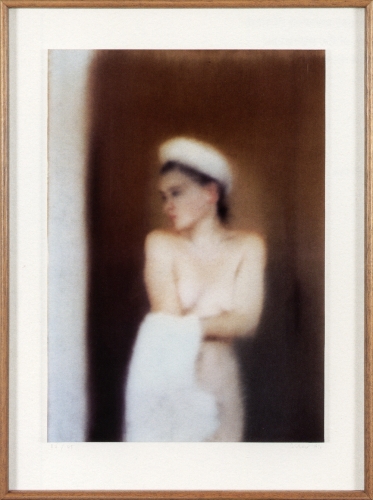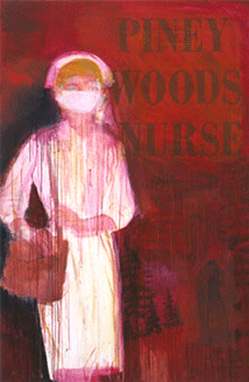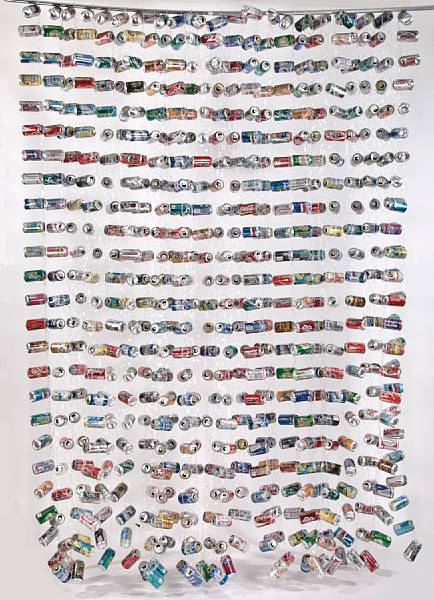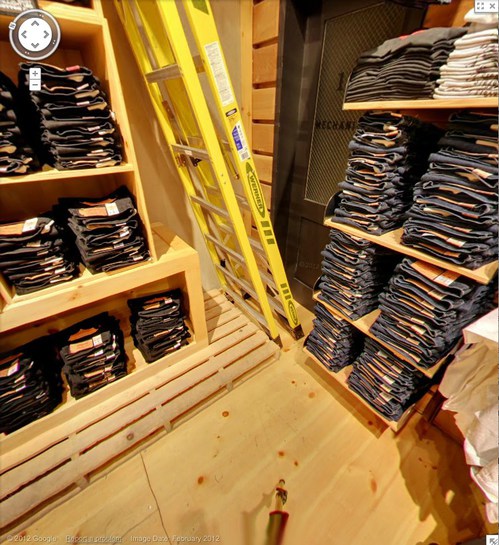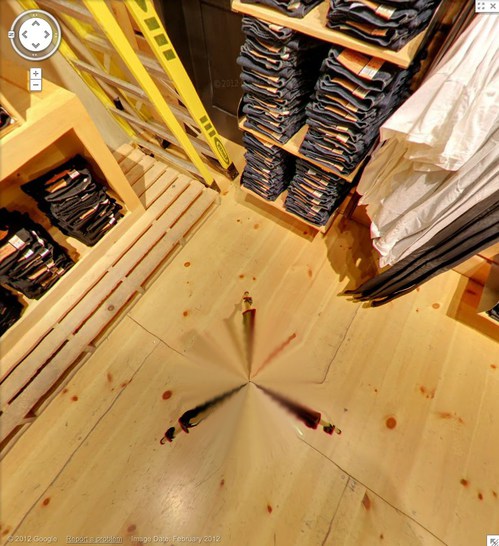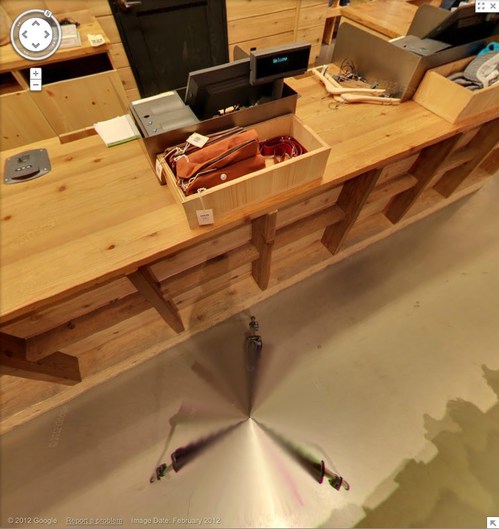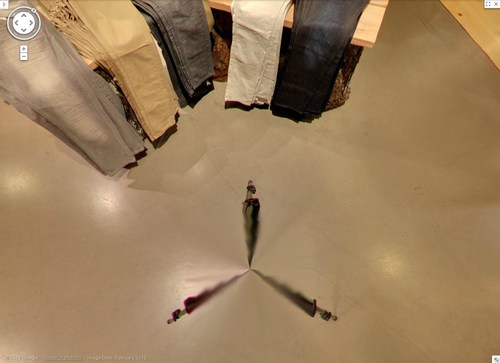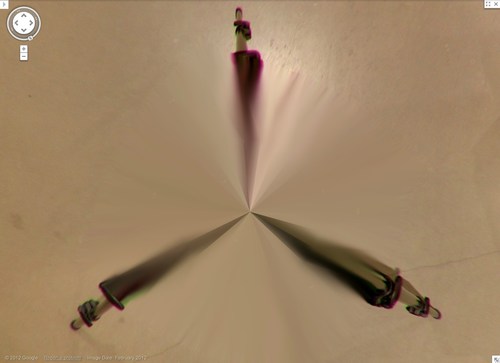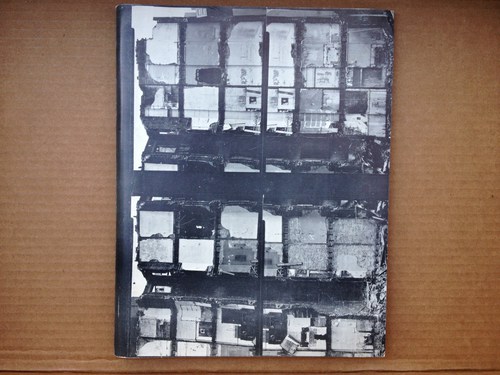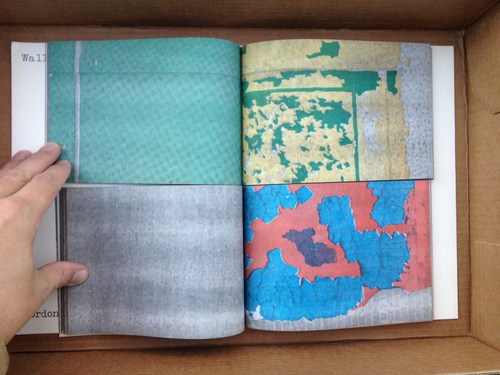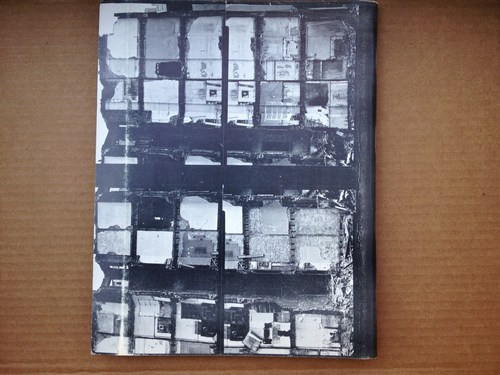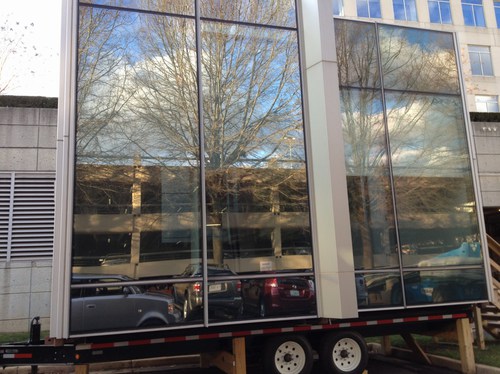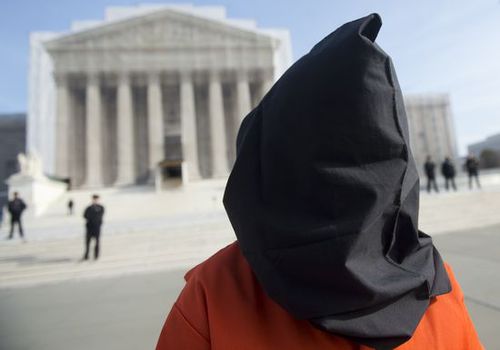Alright, let's get all these together in one place:
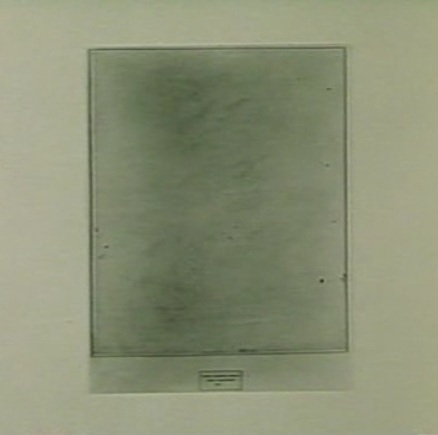
After claiming for more than 40 years that he had drawn it himself, Robert Rauschenberg acknowledged in 1999 that, in fact, Jasper Johns, who "lived upstairs," created the graphite text label collaged onto Erased de Kooning Drawing. Or as one person who knew the work when it was made told me last year, "Bob made it, but Jasper made it art."
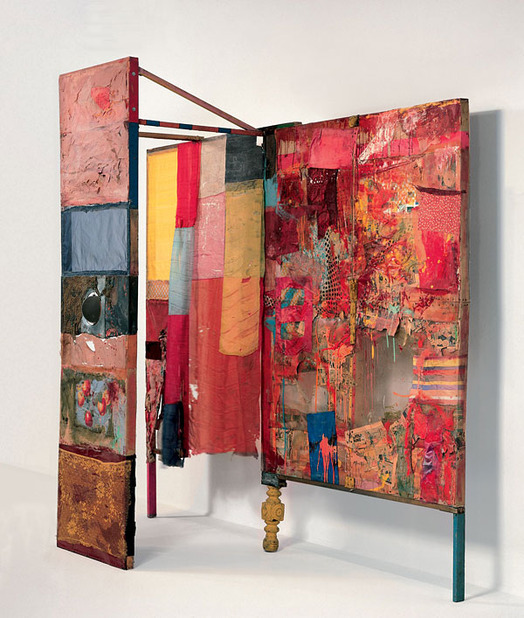
Minutiae
Jasper Johns in 1999, as published on the site of the artist's Foundation for Contemporary Arts [and first quoted here in 2011, in discussing collaboration and Jacob Kassay, actually]:
In 1954 I had helped Bob Rauschenberg a bit with his Minutiae set, his first for Merce Cunningham, and I continued to assist him with most of his stage work through 1960.
Rauschenberg is credited with costumes and/or set design for
at least 10 works for the Merce Cunningham Dance Company between 1954 and 1960, including the iconic painted
backdrop/
leotards of
"Summerspace" (1958). Johns's first actual credit doesn't appear until 1968.
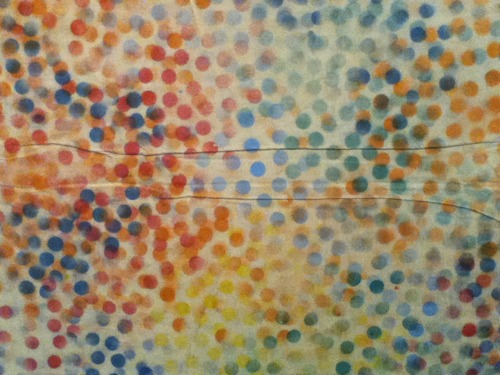
Oh, but look, on this walkeradmin tumblr [? ;)], a detail from the "Johns/Rauschenberg backdrop for "Summerspace." I'm glad it's not just me.
Of the 18 works Rauschenberg is credited with between 1954-58 for the Paul Taylor Dance Company, 17 were for costumes, and one, "The Tower," (1957) was for set design. Jasper Johns is credited with making the costumes for "The Tower."
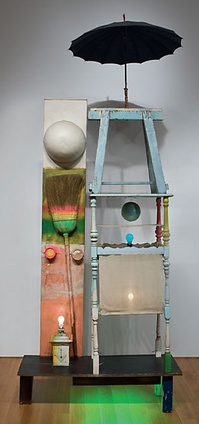
The Tower, by Rauschenberg & neighbor
The Tower, a 1957 Rauschenberg combine created for the dance set, which depicts a couple, was described by the Christie's representative trying to sell it in 2011 as both "autobiographical" and "cryptic," which, for these two, is redundant. For composer John Cooper's part, the Feb 10, 1957 program said he had been considering the "pastoral themes of the Adonis-Persephone myth." [Persephone and Aphrodite both fell in love with Adonis while babysitting him. So, yeah. Not sure what to do with that.]
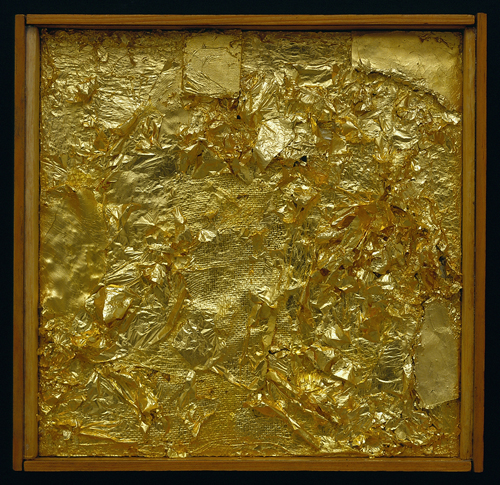
Untitled (Gold Painting), 1956, Menil Collection
I recently met someone who owned a Rauschenberg Gold Painting. The collector said that once Jasper saw it, and said, "Oh, yes, this is one I did." 10 existing gold paintings predate 1954, the year of Johns's and Rauschenberg's meeting, but according to Walter Hopps' 1991 catalogue, "two or three" were made afterward, at the "special request" of friends. Alison Gingeras included Untitled (Gold Painting), 1955, in "Unpainted Paintings," her 2011 show at Luxembourg & Dayan. The Menil's gold painting [above] dates from 1956.
In 1977, in the SoHo Weekly, art historian Roberta J.M. Olson had posed to Johns this kind of remarkable question:
During his early days in New York City Johns and Robert Rauschenberg shared a closely knit friendship of cross-fertilization...It has been said [it has?? -ed.] that during this period the two artists also painted works in each other's styles.
I asked whether any so-called "Johns paintings by Rauschenberg existed in collections today?
JJ: No, but there is one "Rauschenberg" by Johns. Really, though, it is a Rauschenberg because after I finished it, Bob fooled around with it and I do believe that he eventually signed it. It was a small painting and I don't know its whereabouts today...The only time I remember Bob actually working on a painting of mine was when he picked up the red paintbrush and went to work on one of the white stripes in a flag painting" [...]
One? Just one? Does no one ever ask follow-up questions? No, no one ever does.
Johns told Calvin Tomkins in 2005 that in 1960 Rauschenberg, who had been using maps as an element in his combines as early as Small Rebus (1956), "simply gave" him mimeographed maps of the US, which he painted on directly, and later enlarged into paintings like Map (1960).
UPDATE: In fact, Rauschenberg painted on maps as early as 1950, when he created Mother of God, which was part of SFMOMA's massive 1998 acquisition.
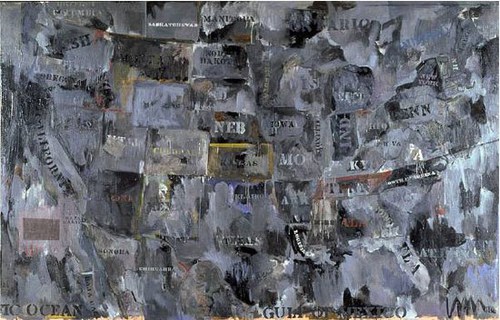
Map, 1962, image via moca.org
In 1988, Deborah Solomon told a version of Johns's Flag dream story that somehow includes direct quotes from--and a co-starring role by--Rauschenberg:
One day in 1954, Johns casually mentioned to Rauschenberg that he'd had a crazy dream the previous night. ''How crazy was it?'' Rauschenberg asked. ''Well,'' Johns replied, ''in this dream I was painting the American flag.'' The American flag? Rauschenberg didn't think it was crazy at all. ''That's a really great idea,'' he said.
And this all is aside from the
Short Circuit saga; and the fact that
Flag looks like it's constructed like a combine; and his paintings from the earliest canvas & fabric, drawer, canvas, fork, spoon, flashlight, plate, and letter set are essentially combines, too, only we don't call them that--even though Johns says he came up with the term.
There is so much we don't know about how these two artists worked and collaborated. So much that doesn't get asked, or is known and doesn't get written. So much about the similarities and cross-references and resonances in their work that has been overlooked, dismissed or deflected for so long.
From the earliest days, curators like Alan Solomon and critics were assiduous about keeping these two oeuvres separate and distinct. Whenever asked about influence, Johns would say he always tried to stay aware and move away from it. Rauschenberg would emphasize how diametrically opposite their personalities were, and that was that. Whatever the forces at work, whether the closet, the AbEx legacy of the lone genius artist, or the market's willful self-delusion, the work they made and discussed side by side, alone with each other, for six foundational years, is almost only ever considered in isolation.
1954: more than a decade before BMPT, and two decades before Prince & Levine [And multiple generations before Codax, BHQF, and Dylan]. What would it mean for the concept of authorship to find out Johns and Rauschenberg were making each others' work?
update: And while the PMA's amazing collaboration-related show has absolutely gotten me off my duff to post about this subject, I swear, I had no idea that Alistair Macaulay would publish his email q&a with Johns about his work with Merce Cunningham this morning. Great minds.
